Australian photographer Christiaan Hart has traveled throughout Asia to cover international sporting events such as Grand Prix, professional golf tournaments, ATP Tennis, and Rugby Sevens.
Aside from sports, Christiaan also specialises in commercial and corporate events. In 2015 Christiaan was one of two official photographers to cover the BTS (behind the scenes) and event happenings at the APEC CEO summit in Manila. High-level attendees included U.S. president, Barack Obama; Alibaba founder, Jack Ma; and Chinese president, Xi Jinping; as well as many other world leaders and CEOs of major global companies.
Other commercial jobs have seen Christiaan travelling with F8 Photography around Asia to cover Ducati motorbike press launches and large-scale company events in interesting locations such as Burma, Manila, and Thailand.
For the past 18 months, I have been using Sony camera gear on all my assignments, including sports, commercial, events, and personal projects.

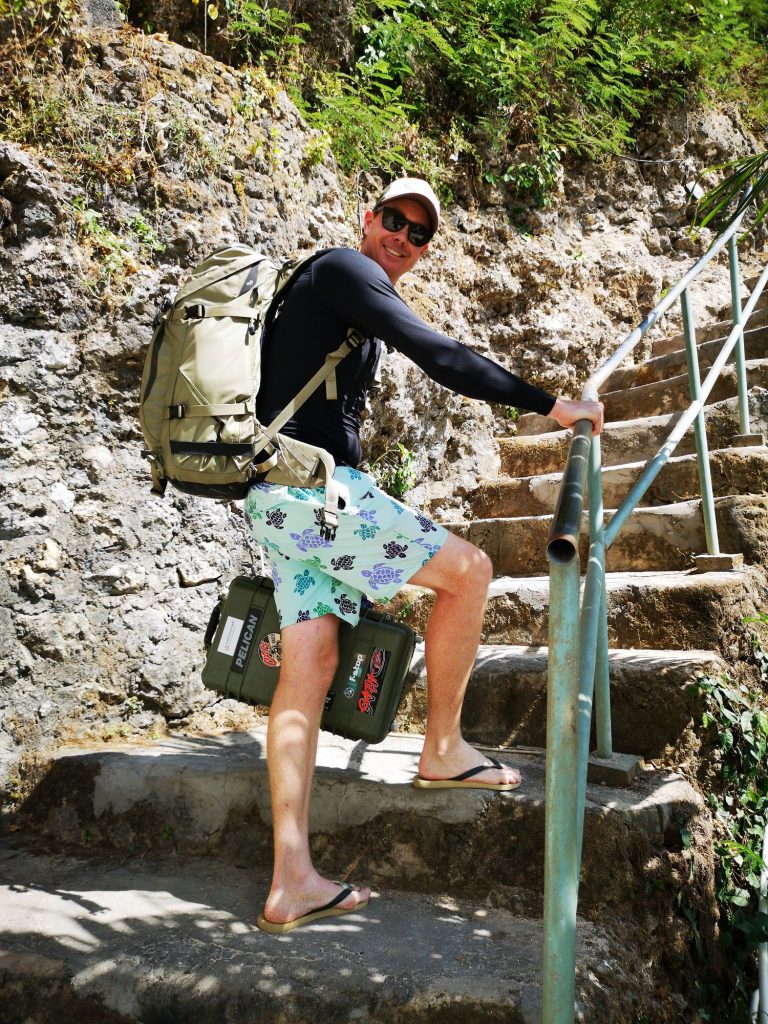
I’ve personally found Sony very reliable and overall a fantastic system that performs every time. Part of the reason I switched to Sony was the autofocus system and the flexibility of having the electronic and mechanical shutter for different shooting environments. A lot of my jobs involve travel around Asia, so packing light is sometimes essential. The Sony system definitely helps in this area, as the camera bodies are compact, which allows more space for other equipment.
Shooting sports is a major part of my job. The Sony a9 has definitely provided options to be able to capture shots more easily than some other brands potentially could. For example, the tilt screen enables me to shoot at lower angles more easily and the electronic viewfinder is helpful for reviewing images in harsh sunlight. The autofocus system, which is super fast, locks onto subjects instantly. The camera body is lightweight, which is good for keeping the weight down during those long days in the field.
Every shoot is different and requires different gear, but my go-to system is the Sony a9, 16-35mm f/4, 24-70mm f/2.8, and the 70-200mm f/2.8. This setup generally covers all focal distances needed on my assignments.
For my upcoming trip to Bali, Indonesia, I will be making the most of the f-stop Tilopa. Actually, this will be the bag’s first real test! I’ll be working on and off boats and beaches shooting water sports. Having easy access to gear is essential and having the option to be able to fit it all in the one bag is perfect.
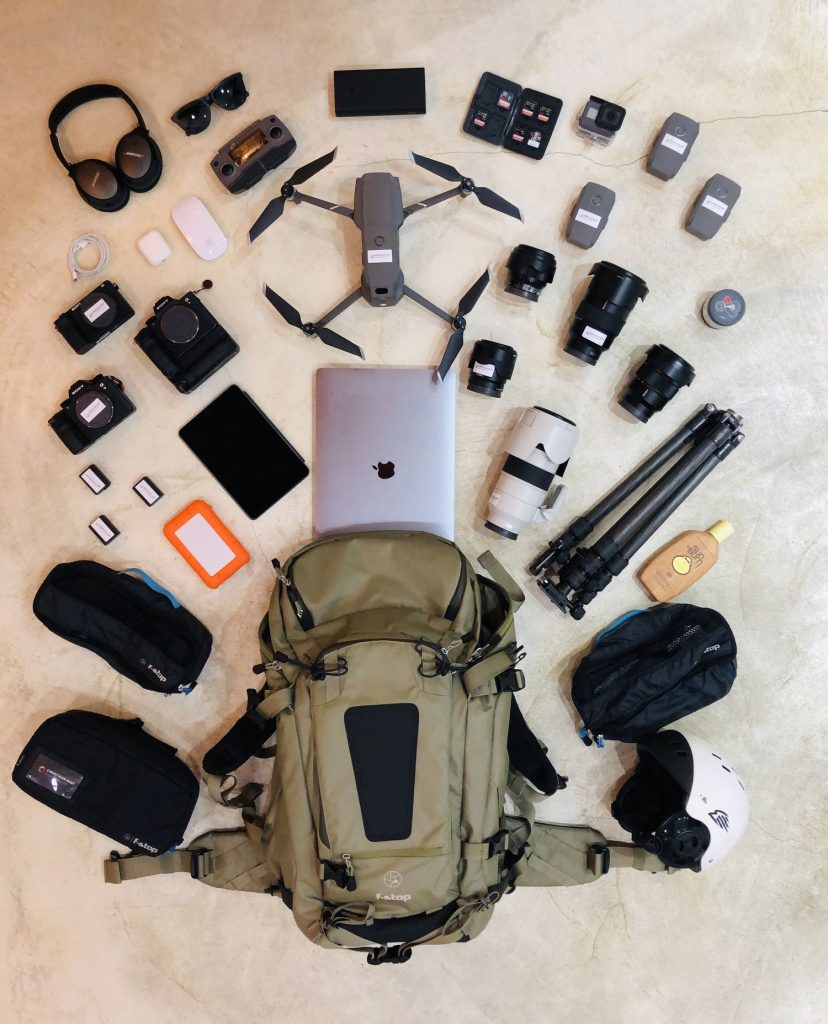
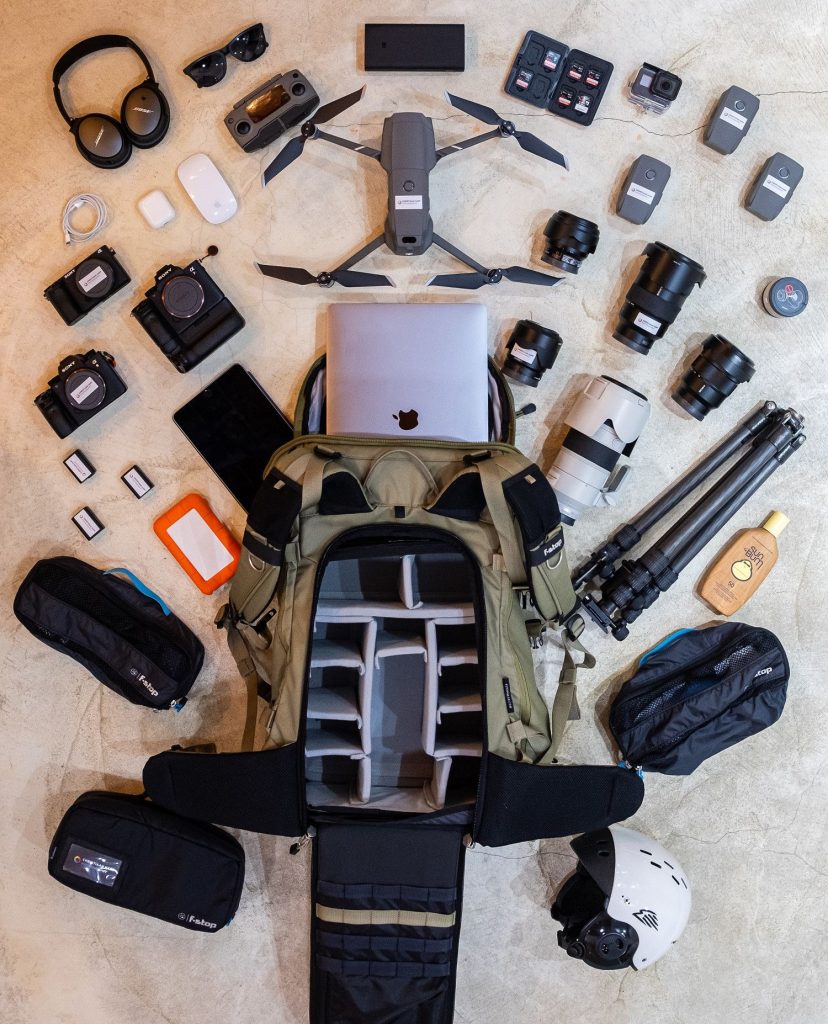
The Tilopa is ideal, as it will accommodate pretty much all of the gear I will need each day. From the airport in Hong Kong to the beaches in Bali, the Tilopa will be home to the following gear for the next seven days.
Ambassador Jason Nugent is traversing Canada with the Canadian Rally Championship as part of the official media team. He has been shooting rally for the last four years and for Jason the appeal of shooting the races is not just the speed and action as the car fly past, but the collective effort by all the people involved to make a rally happen. Read on to get the lowdown on what shooting a rally series involves, the gear Jason uses to get the job done, and why he loves working at these grueling endurance events. Words and photos: Jason Nugent

About a week ago, the second round in the Canadian Rally Championship took place, near Invermere, in British Columbia. For the last few years I have been attending CRC rallies as part of the official series media contingent, providing photography to our digital media editor for the daily writeups and social media feeds each day. I have been photographing rally for several years now, and each time I attend one I learn more, experiment with new techniques, and think of new ways to photograph the same event in the coming years. I look at a lot of work by other rally or motorsport photographers. I recommend you check out stuff from Jaanus Ree, Andrew Snucins, Lars Gange, and Alex Wong as it is very inspirational.
For those who do not know what a stage rally is, let me explain. A stage rally is often, but not always, a multi-day event. Teams of two, a driver and a co-driver, tackle a number of stages, or race sections of road. These roads are usually gravel (in the summer) or snow and ice covered in the winter, often occur in the forests or mountains, and are raced at extremely high rates of speed. The co-driver’s job, among other things, is to dictate the pace of the stage, calling out corners and features of the stage as they are needed using pace notes that are created or updated the day prior to the race. After the stage, the teams must transit their car to the start of the next stage, obeying all speed limits and laws. There are only a few times when teams may return to service, a park where their crew are allowed to perform repairs to the car, within strict time limits. If anything needs fixing during the stage or on a transit, the teams must fix it themselves.
There may be more than a dozen stages in a rally, covering hundreds of kilometers of racing and maybe hundreds more of transit. Because of the large geographical area in which rallies take place, photographing a rally requires substantial logistics and planning. It is one of my favorite things about a rally. I am a logistics nut, and this sort of thing is right up my alley. As a photographer, I must arrive before the actual racing starts and perform my own “recce”, where I drive the stages and look for vantage points where I can photograph safely. In the Eastern part of Canada, I use my own car for this, and have added skid plates to protect it from the rocks on the road. I make notes of my location, and time my own transit between positions so I know that my plan is feasible on race day. I need to be in position before the stage is declared “hot” and I cannot move until it is deemed safe to do so. It is often impossible to photograph two successive stages if they have a transit between them since by the time I am allowed to leave my position the next stage has already started. Occasionally, like Rocky Mountain Rally, the same stage is raced in multiple successions so it may possible to move to a new location on the same stage if you’re quick and you have the safety marshall’s blessing. I carry a HAM radio at many events so I can listen to course officials communicating which can be very helpful.

There are seven rallies in the Canadian Rally Championship series, beginning in early February in Maniwaki, Quebec, then going out West for Rocky Mountain Rally, back East to Quebec for the next two, out West again for Pacific Forest Rally, then Ontario in November, and then back out West in December for another snow event at Big White Resort near Kelowna. It is both a blessing and a curse that Canada is so large and the season is so long; we have not one but two winter rallies that are actually quite different to photograph. Perce Neige in Maniwaki is a one day event, it is often brutally cold (below -30C in the morning), goes very long into the evening, and the roads are very icy and the snow banks are very hard. Big White is a two day event and there is a ton of soft fluffy snow. The photography aspect of both rallies is very different. Rocky Mountain Rally this year was very hot (plus 30C), dry and very dusty, an entirely different experience.
There is a similar series in the United States, organized by the American Rally Association. The series is growing each year, last year being their inaugural year. Between both series, I photographed 8 national rallies last year, plus a few smaller local events. I work my rally attendance in between expedition and commercial work, so my schedule is quite busy. I hope to do more this year. The goal is to photograph World Rally Championship events. That would be pretty awesome!

On to the meat of this article, the gear I use. Some things remain the same from rally to rally, like camera bodies and lenses. I work with Nikon bodies, and use a D810 and an older D700 body. The D810 is my main body, and I often use the D700 as a remote camera to get photos from vantage points that would be too dangerous to stand. Stage rally is different from many motorsports in that there is often very little protecting you from your own stupidity. Cameras are cheap compared to your life. The 70-200/2.8, 24-70/2.8, and 16mm fisheye lenses are staples in the bag. A long prime occasionally comes in handy if I am attending a rally that has long views. Usually, all of this fits in a medium or large pro ICU that I have owned for years now.
For early evening and night time shooting, you’ll probably need some sort of light set up. I use a pair of Phottix Indra strobes that I can control remotely. They will shoot TTL but I am almost always in manual mode because I want to control the light output. At 500 watt/seconds, they easily throw enough light, and their Li-Ion batteries make them very portable. I try to be very careful with their use and never point them directly at a driver’s eyes. I often shoot wide, because a big part of rally is the scenery, and I will use strobes to light up the background or spectators which can look very cool. After you do a particular rally a few times you will envision different photographs requiring new equipment.

For summer rallies, I usually carry a small folding saw to cut branches off of brush or trees to improve sight lines, in the winter I always have snow shoes at hand if I need to trudge through snow, plus a small collapsible shovel.
For hot and dry rallies, dust is your enemy. You need to protect your cameras from dust and flying rocks. I’ll keep my lens cap handy and replace it after each car goes by on dusty events, and I will refrain from changing lenses during a stage because I don’t want to expose my sensor to air so thick with dust you can chew it. A rain cover for your camera also makes a great dust cover, and so do shower caps from hotel rooms in a pinch. Protect yourself - bring sunscreen, lots of food and water, and bug repellent. For winter rallies, the cold wreaks all sorts of havoc. Batteries need to be kept warm, so your bag is usually full of pocket hand warmers. You’ll also need extra space for warmer clothing.
Stage rally is an endurance event. The days are long, rallies get delayed occasionally, and they will run regardless of weather. In addition to carrying my photo gear, I need to be able to support myself. The f-stop Sukha is my bag of choice for stage rally because it is large enough to carry my photo gear plus my own personal gear. It has enough side pockets and attachment points to allow me to carry things on the outside of the pack, like light stands and maybe a tripod. Some of this stuff can stay in the car where I can get to it between stages, but I do need to bring a lot with me into the field where I might be for an hour or two, potentially hiking to get there. It is not always possible to park near your location. I love the harness on the f-stop bag; it fits me well and is well padded, and does not cut into my shoulders when I am using it for hours on end. The bag materials are weather resistant enough to provide great protection on their own, and the rain cover comes in handy when the weather gets really bad.


Every year Red Bull Rampage produces some of the most jaw-dropping images of mountain biking. f-stop Icon Scott Markewitz breaks down his gear and talks us through what is going in his bag for the Red Bull Rampage, along with some shots taken with that setup over the years.
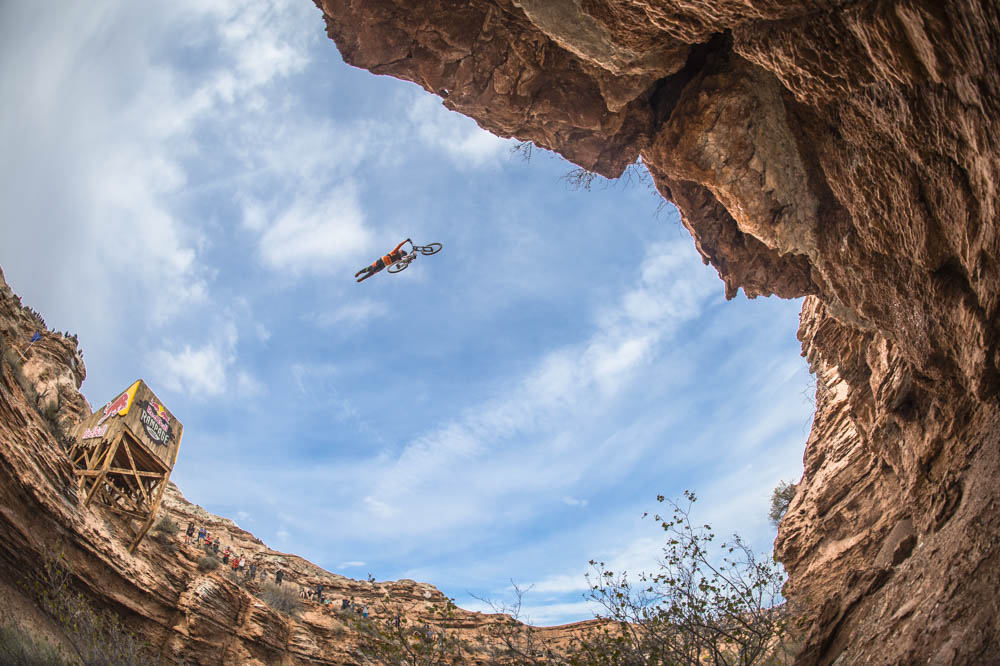
Words and photos: Scott Markewitz
In 2018 f-stop Icon Scott Markewitz documented the Red Bull Rampage as the Event also moved to a new zone with riders building entirely new features and lines. Just like the riders, the photographers have to navigate the vertigo-inducing terrain to find their angles on these new features. In order to navigate the Rampage course and still carry a two-body setup, Scott grabs the slimmest of the Mountain Series packs for this.
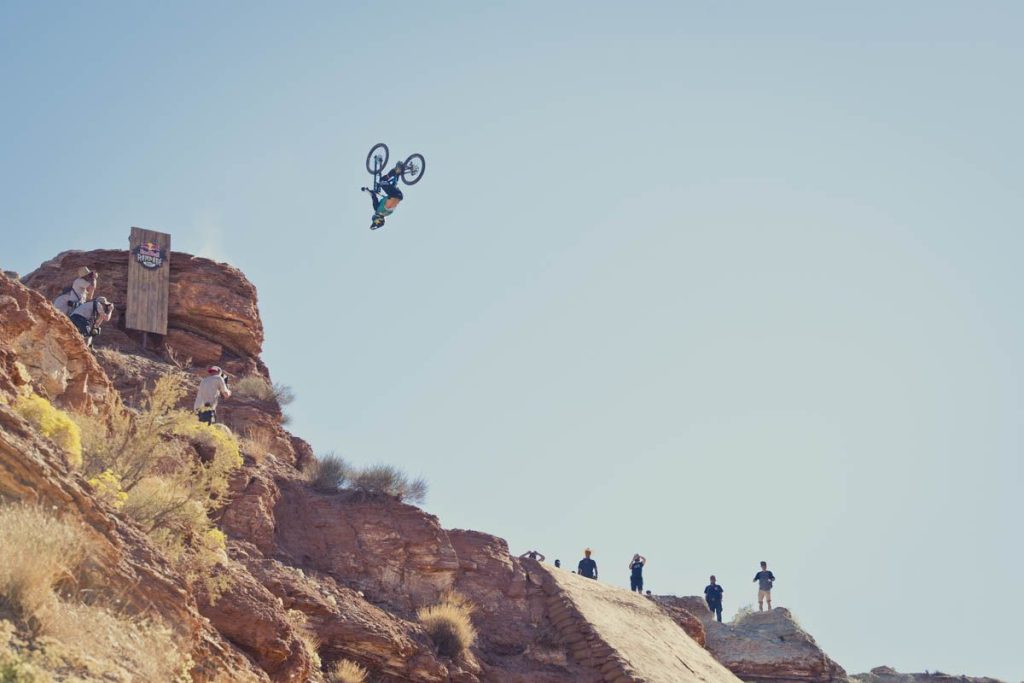
Kurt Sorge sends a backflip over the media pack at last year's Rampage, shot with the trusty 70-200.
The Rampage is one of the most incredible events in action sports. It brings together the world’s best freeride mountain bikers for a contest and a show of massive jumps and insane riding skills on the rugged terrain around Virgin, Utah. I’ve been to every Rampage since the beginning and it’s definitely one of the shoots I look forward to every year
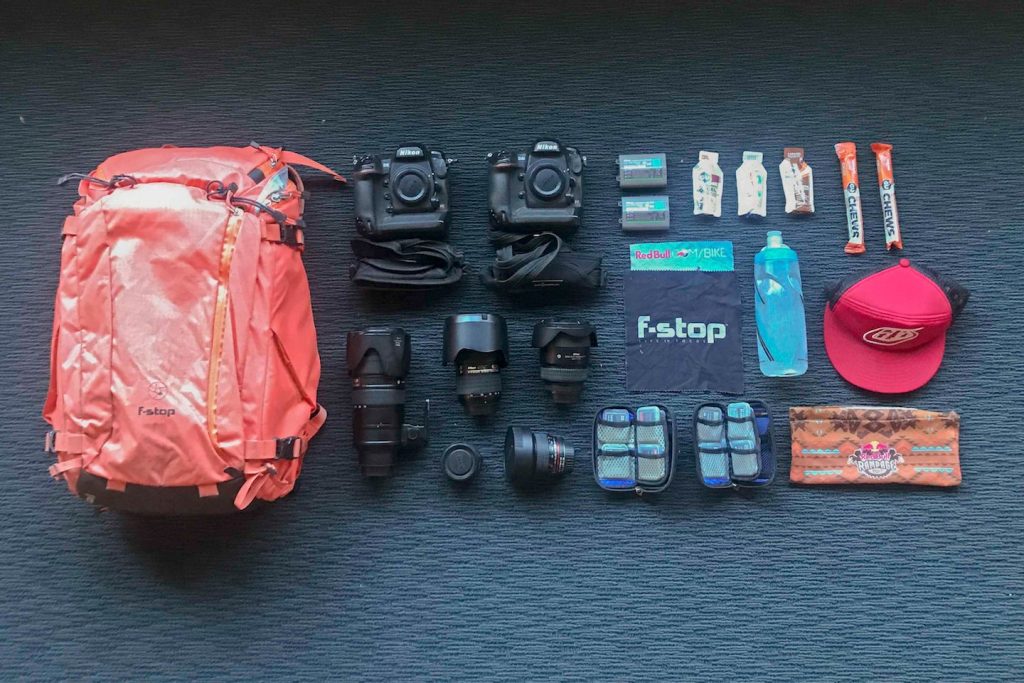
On the road to Rampage 2018: Packing two full frame pro body DSLRs, 4 lenses, and daily essentials in the 32L Lotus camera bag to stay agile working shooting among the Utah cliffs of the Red Bull Rampage course.
One of the challenges of photographing the Red Bull Rampage is moving around and getting set up to shoot the riders during the event. The venue is spread out and every athlete takes a different line down the mountain. There’s not much time between runs, so you have to have to know where you’re going to shoot and move fast between each run to get in place. I like to have a pack that is large enough to carry everything I need for the event but light and agile when I’m running up and down the mountain between shots. For this year’s Rampage, I’m taking a Lotus.
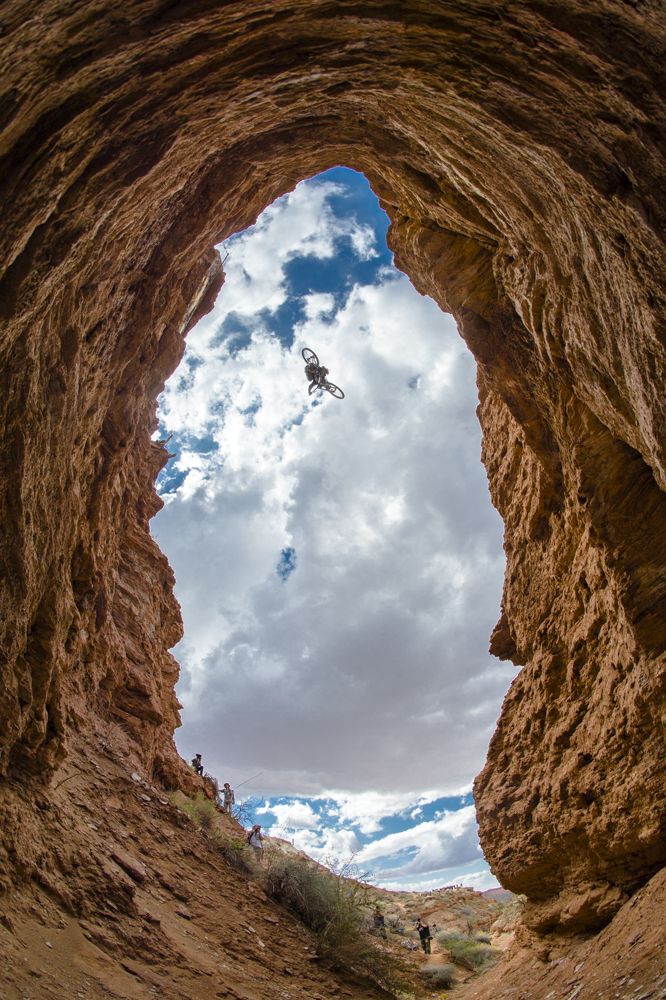
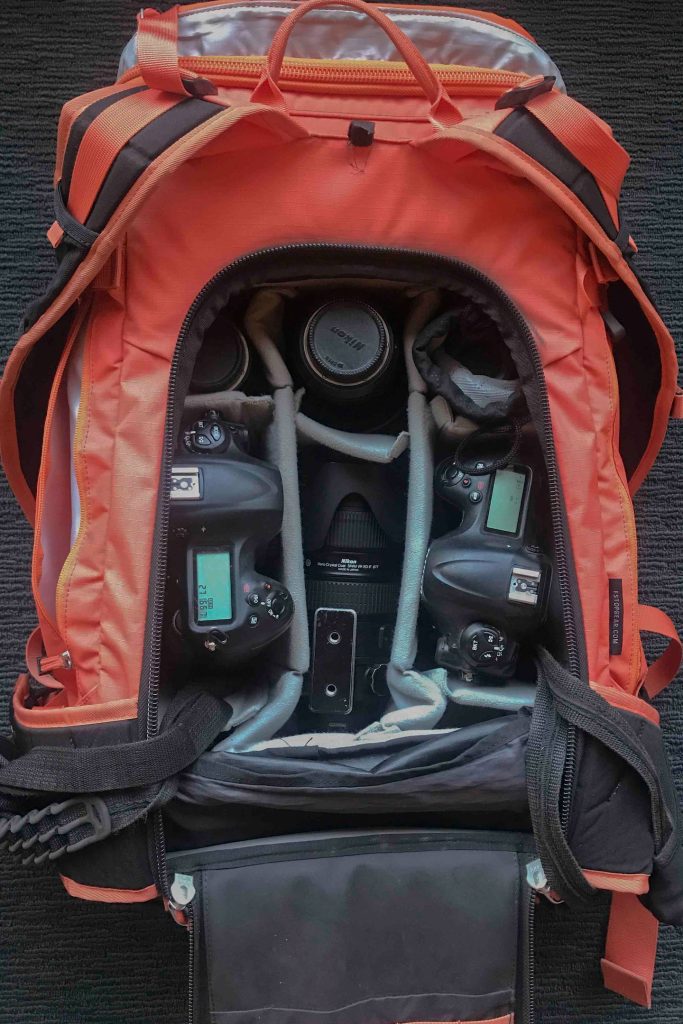
The Lotus is a great mid-size camera pack that still fits a Large Pro Camera Insert but is lightweight and most importantly easy to move around with. This is especially important on an Event like the Red Bull Rampage.
I always have two full-size DSLR bodies in my camera backpack, a Nikon D5 for the majority of my work with a Nikon D4S as a backup just in case the D5 fails. For lenses, I bring a 70-200mm 1:2.8 GII, 24-70mm 1:2.8G, 17-35mm 1:2.8D, 12mm 2.8 Fisheye, a 1.4x converter to extend the range of my 70-200, as well as extra camera batteries, lens cloths and more than enough CF cards for any day of shooting.

Cam Zink doing what most of us would want a parachute for, on his way to 2nd place at Rampage 2017, shot with the 12mm fisheye giving a sense of the wide open space the athlete is launching into.
The Southern Utah desert is hot, dry, and dusty and the sun beats down on you when you’re out there all day. A water bottle is obviously important to stay hydrated, but I also bring a hat, a buff for extra cover, and sunblock (not shown), as well as a few GU energy gels and chews for a quick energy boost when I need it.
It doesn’t seem possible that the riders can go any bigger or do anything wilder, but at every Rampage the athletes continue to push the realm of what’s possible to new levels. I’m really excited to see what they are going to pull off in the future.
It’s going to be another incredible event!
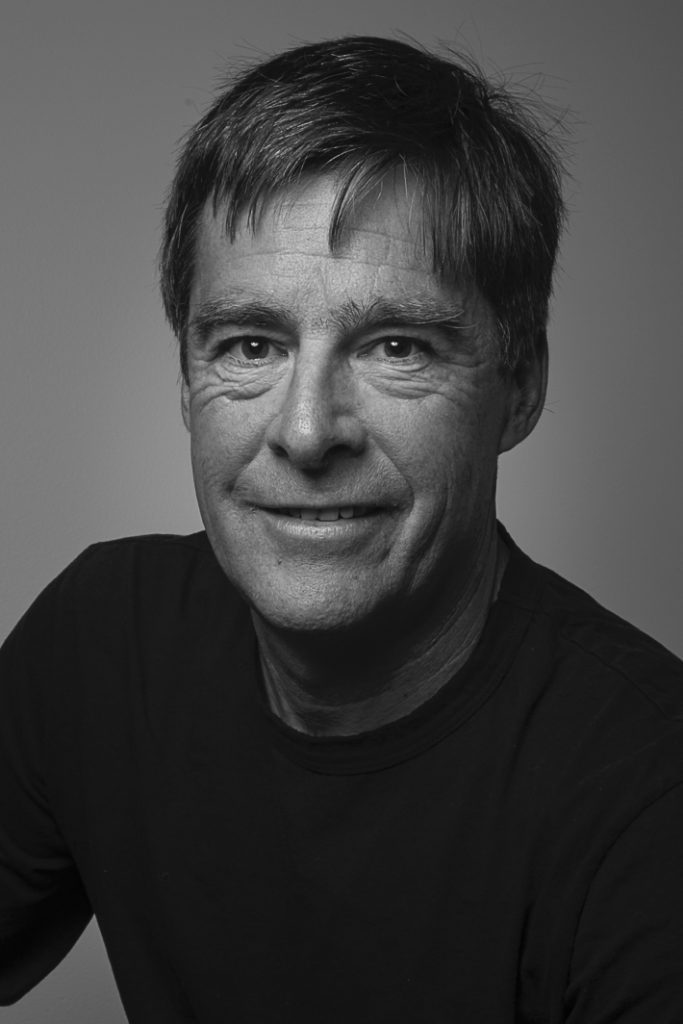
Scott Markewitz is recognized as one of the most influential outdoor photographers in the industry. His passion for photography and the outdoors comes through in everything that he shoots, whether it’s action sports, active lifestyle, or environmental portraits. His images have appeared in advertising and promotional campaigns for many well-known outdoor and consumer brands
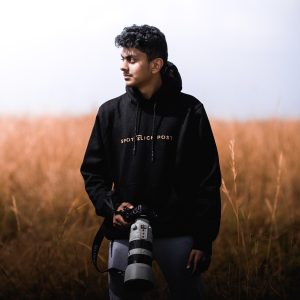
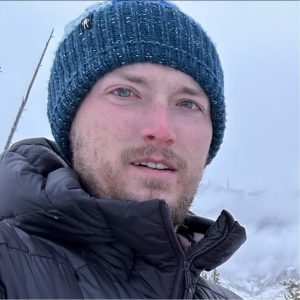
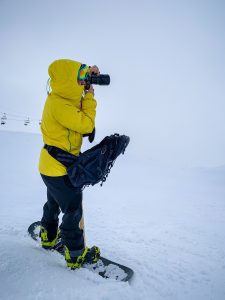
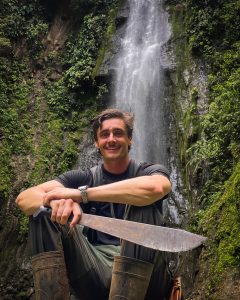


Discount Applied Successfully!
Your savings have been added to the cart.